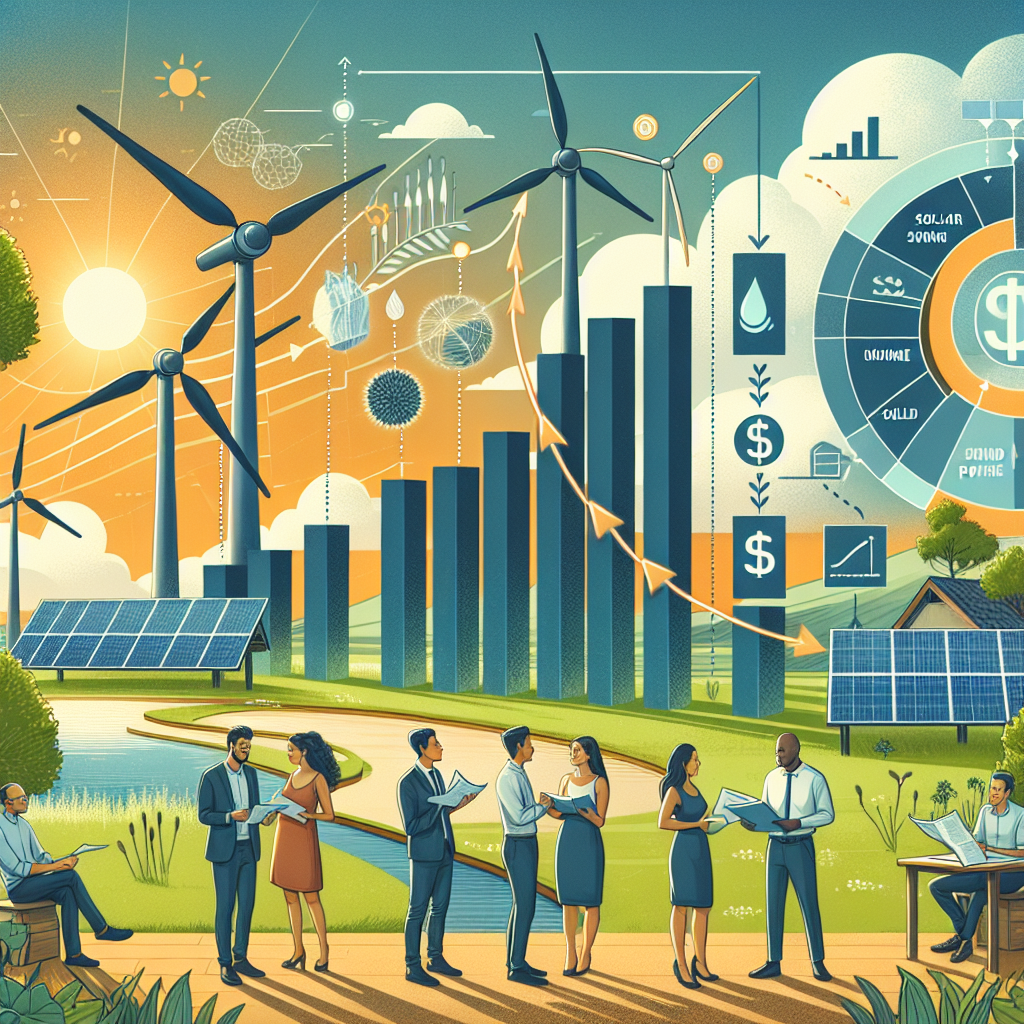In an era where sustainable living is taking center stage, renewable energy is not only vital for protecting our planet but also offers an attractive avenue for passive income. With the rising awareness of climate change and the need for cleaner energy sources, investing in solar and wind energy has gained momentum. This article delves into the potential of renewable energy investments, focusing on solar and wind, and how they can serve as a reliable source of passive income.
Understanding Passive Income
Passive income refers to earnings derived from ventures in which an individual is not actively involved. This can include investments that generate revenue without the need for daily management. Renewable energy investments, particularly in solar and wind, are ideal for individuals seeking to secure a steady stream of passive income while contributing positively to the environment.
The Significance of Renewable Energy
The Growth of Renewable Energy
The renewable energy sector has witnessed extraordinary growth over the last decade. With technological advancements and supportive government policies, solar and wind energy have become more accessible and cost-effective. This growth presents unique investment opportunities for individuals looking to generate passive income.
Environmental Impact
Investing in renewable energy not only supports a sustainable future but also reduces an individual’s carbon footprint. As consumers become increasingly eco-conscious, companies and investors embracing renewable solutions will likely succeed in the long run.
Solar Energy Investments
How Solar Energy Works
Solar energy harnesses sunlight through photovoltaic cells or solar panels, converting it into electricity. Homeowners and businesses can install solar panels, and excess energy can be sold back to the grid, creating a profitable revenue stream.
Types of Solar Investments
-
Residential Solar Installations: By installing solar panels on your property, you can generate energy and benefit from lower electricity bills. Often, any surplus energy produced can be sold back to the grid, allowing homeowners to diversify their income sources.
-
Solar Real Estate Investment Trusts (REITs): Investing in solar REITs allows individuals to benefit from the revenues of large-scale solar installations without the associated maintenance and upfront costs.
- Crowdfunding Platforms: Many startups allow individuals to invest in community solar projects through crowdfunding. This approach pools funds from numerous investors to finance solar installation projects, enabling passive income generation from solar energy.
Financial Considerations for Solar Investments
While the initial investment can be substantial, solar energy typically offers good returns over time. Understanding local incentives, tax credits, and rebates can significantly alleviate costs and improve your profit margins.
Wind Energy Investments
The Mechanics of Wind Energy
Wind energy is harnessed through turbines that convert kinetic energy from wind into electricity. Like solar, wind energy has become a viable investment option as harnessing wind power has become technologically sophisticated and economically feasible.
Types of Wind Investments
-
Direct Ownership of Wind Turbines: Investors can purchase and operate wind turbines, either independently or through a partnership. While this option requires a considerable investment upfront, it can yield substantial returns.
-
Wind Energy Investment Funds: Similar to solar REITs, these funds invest in multiple wind energy projects, spreading out the risk and providing investors with regular dividend payments.
- Community Wind Projects: Some communities allow residents to invest in local wind projects. This grassroots approach fosters community involvement and allows investors to earn passive income while supporting local energy needs.
Wind Energy Incentives
Various governments offer tax incentives and grants for wind energy investments, making it an appealing option for those seeking financial returns and ecological sustainability. Understanding these incentives can significantly enhance the potential profitability of wind energy investments.
Risks and Considerations in Renewable Energy Investments
Market Volatility
Like any investment, renewable energy can be subject to market fluctuations. Understanding this volatility and conducting thorough research ensures investors make informed decisions.
Regulatory Environment
Government policies and regulations can dramatically influence the profitability of renewable energy projects. Staying updated on local and national energy regulations is essential for ensuring long-term success.
Technological Advances
Technology in renewable energy continues to evolve. Investors should remain informed about new innovations that can enhance efficiency and reduce costs, ensuring their investments remain competitive.
Conclusion
Investing in renewable energy, particularly solar and wind, presents an opportunity to create passive income while making a positive contribution to the planet. By understanding the nuances of each investment type, individuals can harness the power of sustainable resources and secure a steady income stream. As we move toward a greener future, the potential for profitability within renewable energy investments is undeniable, making it an attractive option for the conscious investor.
Embrace the opportunity to be part of the renewable energy revolution, and turn your investments into a sustainable and lucrative venture!

